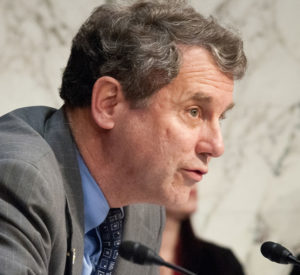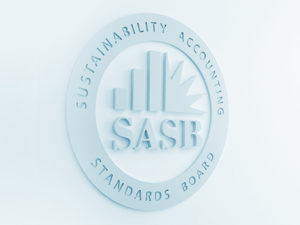
Gail Glazerman, CFA Analyst, Sector Lead – Resource Transformation and Renewable Resources
Perhaps encouraged by historically low unemployment rates, evolving demographics, the fallout from the #MeToo movement, or certain high-profile industrial accidents with tragic consequences, the “human capital” dimension of sustainability has garnered increasing attention.
There have been numerous prominent labour actions over the past few months, ranging from global walkouts at tech firms such as Google to protests by gig-economy contractors at Lyft and Uber to teacher strikes at school districts across the US. In addition, there is heightened focus on pay equity and diversity. Reflecting these pressures, multiple US states and municipalities have enacted increases in minimum wages and other benefits such as paid family leave. Several large corporations have proactively committed to raising their minimum wage, and McDonald’s recently announced it will no longer lobby governments against mandated increases in minimum wage. Others are adding new benefits, such as Starbucks’ arrangement with Arizona State’s online university to offer free college education to its employees. Large firms such as Salesforce and Apple are signatories in a California-led initiative to raise awareness of, and ultimately close, the gender pay gap.
Wall Street Steps Up
Investors are taking note, with gender and diversity initiatives increasingly appearing on proxies. In fact, Corporate Secretary observed that the US Securities and Exchange Commission (SEC) recently declined to grant no-action relief to a couple of companies that were seeking to exclude shareholder proposals asking for more disclosure on certain human capital metrics from proxies.

“Fearless Girl” statue by Kristen Visbal/SSGA
State Street attracted attention with a 2017 call for Board Gender Diversity symbolized by the “Fearless Girl” statue near Wall Street. BlackRock and State Street, among others, continue to emphasise this theme. Investors are quick to note their interest in these matters is not purely altruistic. BlackRock has declared “profits are in no way inconsistent with purpose … Purpose guides culture, provides a framework for consistent decision-making, and, ultimately, helps sustain long-term financial returns for the shareholders of your company.”
BlackRock’s annual letter to CEOs included human capital management among its engagement priorities for 2019. The letter asserts that “attracting and retaining the best talent increasingly requires a clear expression of purpose. With unemployment improving across the globe, workers, not just shareholders, can and will have a greater say in defining a company’s purpose, priorities, and even the specifics of its business.” Similarly, State Street’s 2019 proxy letter focused on corporate culture, noting “intangibles such as corporate culture are driving a greater share of corporate value.”
Enhancing Price Discovery
In 1975, intangible assets accounted for only about 17 percent of market value—by 2015 this had essentially inverted, with intangibles accounting for a dominant 84 percent of S&P 500 market value. This shift is at the core of SASB’s mission, to support improved disclosure of financially material, decision-useful sustainability information to investors. We believe the increased availability of consistent, comparable, reliable data will help investors better assess the value of these intangibles.
SASB standards cover five main dimensions—Environment, Social Capital, Human Capital, Business Model & Innovation, and Leadership & Governance. Within the Human Capital dimension SASB standards focus on Labor Practices, Employee Health & Safety, and Employee Engagement, Diversity & Inclusion. However, because each industry has its own unique sustainability profile, these issues encompass a broad range of impacts including employee turnover, collective bargaining, diversity, wages, and recruitment. All 11 SICS sectors have standards for Human Capital, with the codified standards for more than 40 of the 77 industries covering at least one of these Human Capital issues.
Increasing Regulatory Scrutiny
The Human Capital Management Coalition, which represents investors with a combined US$3 trillion in assets, petitioned the SEC to require companies to increase disclosure on the topic. In response, human capital management disclosure was the focus of a recent SEC Investor Advisory Committee (IAC) meeting in which the committee approved recommendations that the Commission:
- Recognise the importance of human capital management and incorporate the topic into its ongoing review of disclosure effectiveness, which is aimed at modernizing corporate reporting;
- Aim to “learn more from investors, issuers and the academic community…including what kinds of Human Capital Management disclosures are already required…with a view of minimising marginal costs of compliance”; and
- Ensure any potential metrics are “crafted so as to reflect the varied circumstances of different businesses, and to eschew simple ‘one-size-fits-all’ approaches.”
During the debate on the recommendations, committee members acknowledged traditional financial reporting may fail to offer insight into the value drivers of intangible assets and expressed a desire to identify material issues that would be low cost/efficient for companies to report. The committee also defined an aim of increasing the comparability of human capital reporting across an industry, recognising human capital impacts will vary significantly across different industries and thus a tailored solution is required.
These observations echo previous comments made by SEC Chairman Jay Clayton. “If you look across our economy, the importance of human capital to the performance of firms has gone way up compared to 40 years ago,” Clayton has said. “So, I think we should be pushing in this direction, but to pick a metric around human capital that would be applicable across all aspects of our economy, you are going to be over inclusive, under inclusive, you are going to miss the mark.” During opening remarks at the IAC meeting, Clayton added, “I also believe that our disclosure requirements and guidance must evolve over time to reflect changes in markets … the historical approach of disclosing only the costs of compensation and benefits often is not enough to fully understand the value and impact of human capital on the performance and future prospects of an organisation.”
Policymakers Join the Chorus
Measuring, managing, and reporting such information is likely to become increasingly important as the spotlight on human capital gets brighter. After all, the SEC is not alone. Pension and Investments reported on a recent Senate hearing focused on environmental, social, and governance (ESG) integration. During the meeting, the CEO of asset manager Calvert Research and Management noted “much of the information provided through voluntary disclosures is difficult to compare and inconsistent across issuers, resulting in considerable costs and resource expenditure for investors.” And Ohio Senator Sherrod Brown declared “the SEC should act to require uniform disclosure of corporate ESG factors … Investors know there are many environmental, social or political risks that could reduce long-term value but companies are not providing that information. Enhancing and standardizing these disclosures will merely bring the SEC up-to-date with other rules around the world.”
Just over a month later, in May, a subcommittee of the House Committee on Financial Services hosted a hearing touching on the topic of human capital disclosure. During the proceedings, Nili Gilbert, the co-founder of Matarin Capital Management, observed that investment managers are seeking better understanding of material, non-financial information, arguing that such data is relevant to a broad swath of companies. She sought to dispel the notion that human capital information is too onerous for companies to collect. In support of a proposed bill to amend the Securities Exchange Act of 1934 to require issuers to disclose information about human capital management in annual reports, Gilbert testified that standardised sustainability disclosures would lower the burden of reporting over time.
The New Normal
The ideals that ran through the SEC committee meeting and the Senate, and House hearings are highly aligned with SASB’s work. As noted above, we have developed bespoke standards for 77 industries and have identified specific human capital issues that are reasonably likely to have material financial impacts on companies in more than half of those. Throughout our standards development and consultation process, SASB has focused on identifying metrics that are cost effective for companies to report, ideally in line with data they are already collecting.

Ohio Senator
Sherrod Brown
As Senator Brown noted, while the SEC and US Congress are currently looking at this issue, many other governments—in the EU, perhaps most notably—have already acted in terms of encouraging large corporations to report on sustainability issues. In fact, SASB standards are recognised by the European Commission as a suitable framework for companies to use in providing such information to investors pursuant to the EU’s Non-Financial Reporting Directive. In addition to other ESG matters, the directive specifically calls for the disclosure of information related to treatment of employees, respect for human rights, and diversity. The EU legislation may also be a bellwether for developments in other countries.
With this mounting interest—whether it’s due to a regulatory mandate or shareholder demand—companies are likely to come under increasing pressure to provide data on human capital management. This does not need to be a burden. Congresswoman Cynthia Axne of Iowa, who sponsored the House proposal—one of several related to human capital management—cited research that found US companies that voluntarily disclose investment in human capital outperform those that do not. In other words, reporting on these factors is not only helpful for investors but can be good business.
